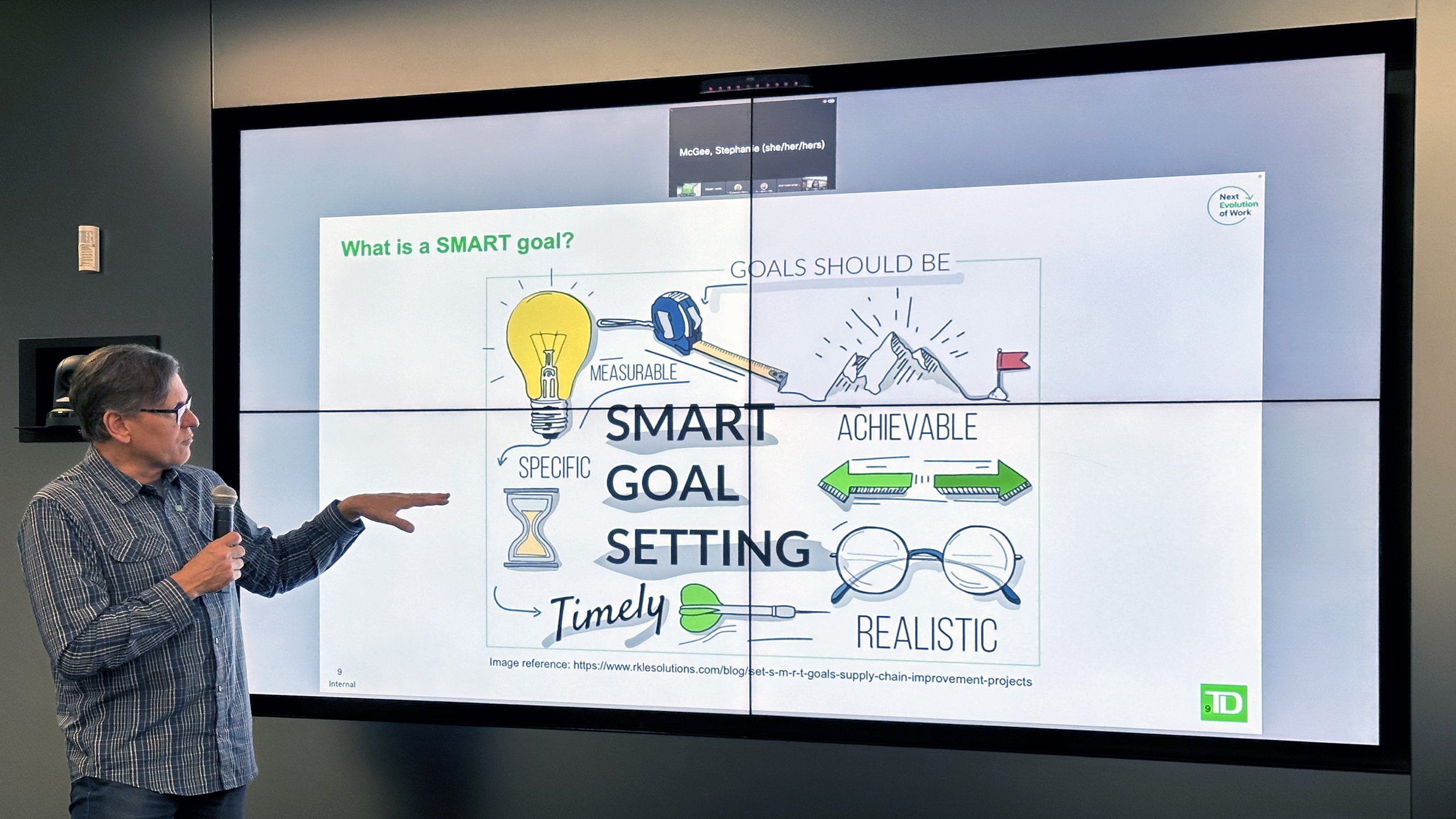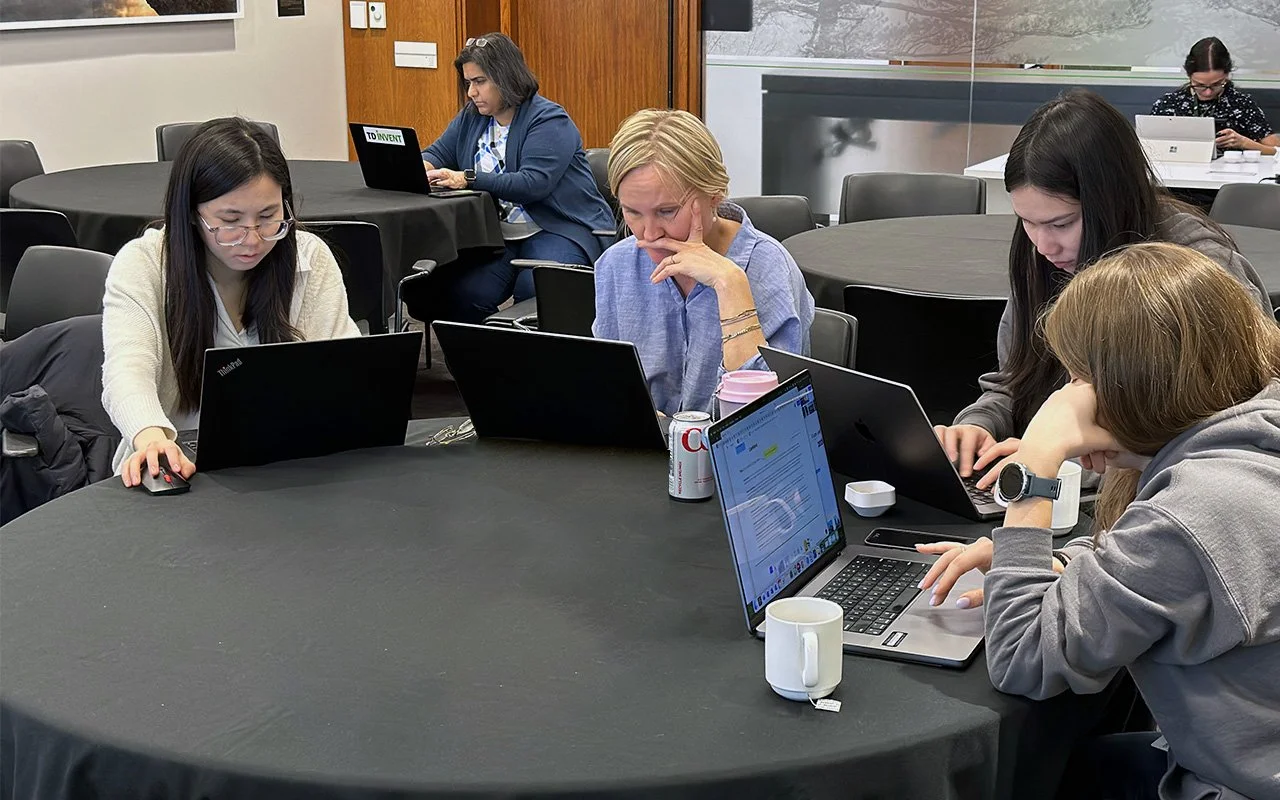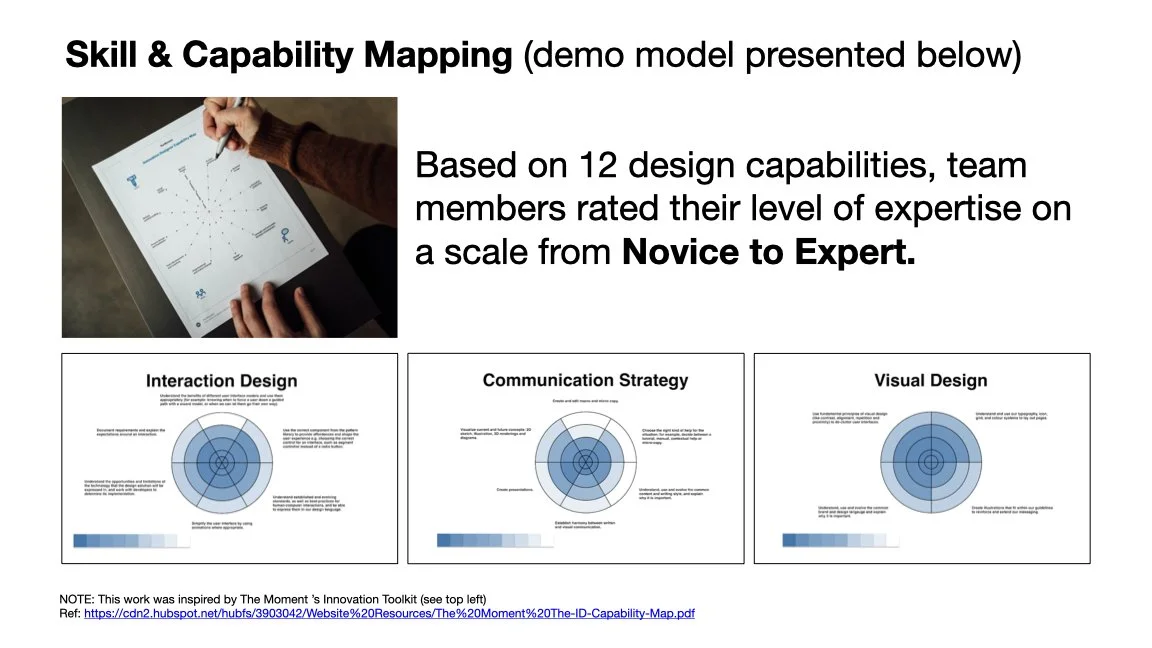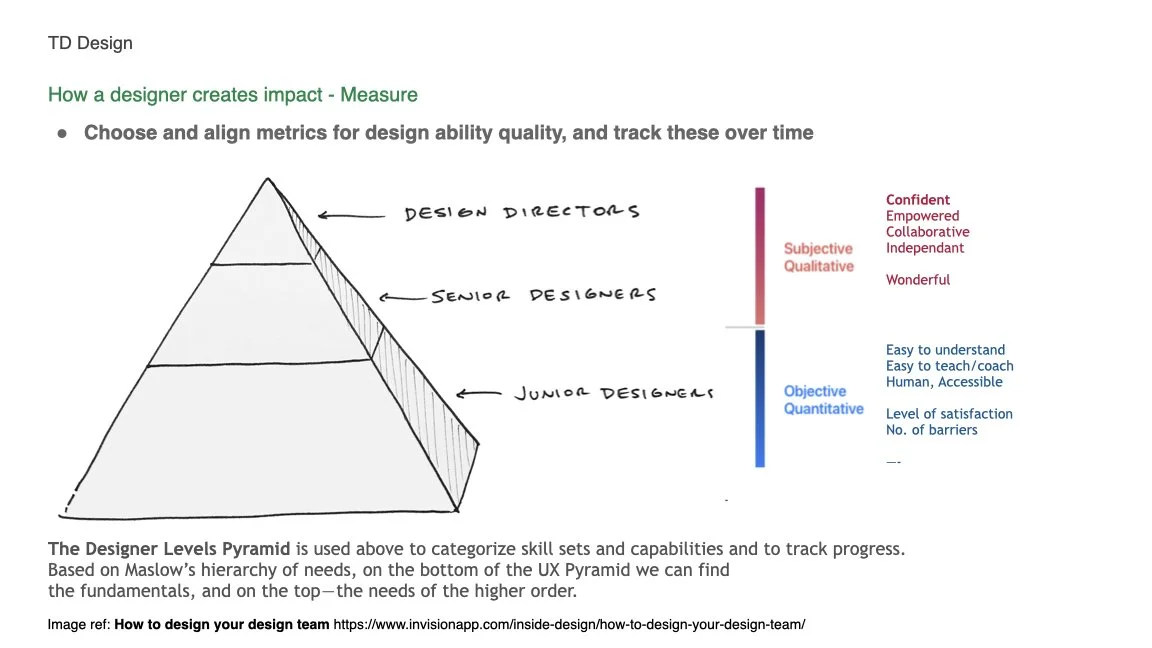Helping Designers Find Their Path
How I built a career-planning program that supports growth, clarity, and confidence across 400+ team members
Why This Mattered
Inside TD iNVENT, designers were growing fast — but not always with clarity.
Designers wanted to understand how to level up. Leaders wanted to nurture future design leads. But the systems in place weren’t built with a designer’s mindset. Career paths felt rigid or disconnected from daily work, and onboarding lacked the human-centred grounding that design teams thrive on.
We needed a better way — one that made growth feel personal, empowering, and co-owned.
AT A GLANCE
| CLIENT |
|---|
| TD iNVENT — an enterprise design, product, and tech innovation group |
| MY ROLE |
| Design leadership coach + capability strategist |
| TIMELINE |
| 2022–2024 |
| CORE FOCUS |
| Career development, onboarding, design coaching, team growth strategy |
| REACH |
| 400+ designers across multiple product teams |
What We Did
I led the design and rollout of a career planning and onboarding program rooted in human-centred design and accessibility best practices. The goal: to support growth and confidence across one of Canada’s largest in-house design organizations.
We co-created the program with the Mobile Design team from the ground up. I facilitated a mix of discovery, co-design, and pilot testing sessions that shaped both the structure and tone of the final experience. We kept what resonated, and adjusted what didn’t — using the same design thinking methods we bring to products.
The final format included four interactive hybrid workshops (run online and in-person):
Service blueprints for onboarding and coaching workflows
Journey maps and career personas to capture team member experiences
UX frameworks for career planning and team development
Vision boards, career strategy docs, and roadmap templates
Usability-tested playbook enabling managers to self-facilitate future sessions
We embedded accessibility and inclusive design practices at every stage — from the visuals and interactions to the reflection prompts and facilitation styles.

The Workshop Journey
Self-Assessment + Career Exploration — mapping current skills and identifying aspiration gaps
Vision Board Activity — visualizing career direction and personal values
Goal Setting + OKRs — turning vision into concrete goals and measurable outcomes
Reflection + Roadmapping — synthesizing next steps and capturing a plan in motion
Across each session, team members engaged in collaborative exercises including role-playing, goal-mapping, and peer-to-peer feedback. Every activity was designed to feel practical, personal, and growth-oriented.
Throughout the project, I produced a suite of design and research artifacts to support adoption, iteration, and leadership alignment:
Service blueprints for onboarding and coaching workflows
Journey maps and career personas to capture team member experiences
UX frameworks for career planning and team development
Vision boards, career strategy docs, and roadmap templates
Usability-tested playbook enabling managers to self-facilitate future sessions
We embedded accessibility and inclusive design practices at every stage — from the visuals and interactions to the reflection prompts and facilitation styles.
Design Tools & Outputs
What Changed
Program scaled across TD iNVENT, reaching 400+ team members across product, mobile, and platform design groups
Designers gained a clear, human-centred process to guide their growth
Mid-level designers received focused support to step into leadership roles
Improved team alignment, coaching conversations, and onboarding consistency
Career planning is now embedded into the employee experience strategy
“
This was the first time I saw a career planning framework that actually felt like design—flexible, personal, and grounded in our daily work.
”
What I Learned
Designing a program like this goes far beyond templates and skills matrices. It’s about helping people feel seen, supported, and in motion.
When designers can visualize their future — and shape it — they not only grow faster, they stay longer. That’s the real value of embedding design thinking into internal systems.
Curious how this could look inside your team?
Let’s design your next capability-building experience — one that actually works for the people in it.


